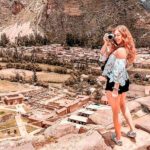Rural Tourism

Are you looking for a different experience? Rural tourism is an excellent alternative to escape the routine and live the daily life of the countryside.
A weekend in the countryside is the opportunity that many seek to escape from the routine of cities, rest in the midst of nature and, especially, rescue the roots. Today we are urban, but even in the not too distant past, the rural environment was our reality.
To help you better understand the subject, we explain in this post what rural tourism is and what is the importance of this segment. And to encourage the trip to the interior, we also selected 8 ideal destinations to enjoy the tranquility, recover the history and return to the origins.
What is rural tourism?
The term “rural tourism” may cause strangeness, but perhaps you have heard of nature tourism, inland tourism or especially agro-tourism. The terms vary, but in general, they can all be understood as synonyms.
According to the Ministry of Tourism, rural tourism is “the set of tourist activities developed in rural areas, committed to agricultural production, adding value to products and services, rescuing and promoting the cultural and natural heritage of the community.
For the visitor, in terms of the possibility of what to do, rural tourism may involve a stay in a farm hotel, meals made with organic food and the practice of recreational, sports and leisure activities. It can also involve the monitoring of agricultural production and, many times, the purchase of food made based on these products.
Rural tourism, as we know it today, emerged in Europe in the mid-1950s as a strategy to enhance peasant life.
In Brazil, the initiative was born in the 1980s, in Lages (SC), and gradually expanded to the rest of the state to serve as an example for other destinations in the country.
Why encourage rural tourism?
For the residents of large urban centers, rural tourism basically works as an opportunity to experience something different. However, for the rural dweller, it represents a chance to generate new income opportunities and to improve quality of life.
Rural properties have found in tourism a way to avoid exodus, conserve natural resources and cultural heritage, value their practices and integrate with the community.
The particularities of the geography and history of each region contribute to the fact that the experiences in the interior of Brazil are very different from each other. In this way, all the experience of rural tourism, even if it is in the same region or in the same city, will have something different.
Although here we have selected eight destinations or circuits that stand out at a national level, you can start by exploring their surroundings. You just have to move a little bit towards the interior to find places with these characteristics.
Rural tourism destinations in Brazil
Welcome to the Colony
It was in the 1980s, in Lages, that the first farms opened their doors to tourism. The initiative of the city of Santa Catarina soon gained strength in the state and, in 1999, the project Acolhida na Colônia was born.
Dozens of properties, in 21 cities spread over five regions of Santa Catarina, offer activities for tourists. In these properties, where the stay is usually in small chalets, all meals are usually included.
It is from the cultivation of the place itself that the ingredients to make breads, cheeses, jellies and other delicacies come out. The good table works as an attraction, but it’s the exchange of experiences with the settlers that surprises the most.

Rural Paths
And don’t even big cities have rural tourism initiatives? Porto Alegre, owner of the second largest rural area among the Brazilian capitals, also has a project like this. Just 30 km away from downtown is enough to reach one of the 17 resorts that make up the Rural Paths.
The activities to support the properties vary, as well as the activities offered to the visitor: from horseback riding to contact with wild animals, from educational tourism to rural tourism, from the purchase of organic products to the purchase of flowers and seedlings.
Stone Paths
The fame of Bento Gonçalves is usually associated with Vale dos Vinhedos, where some of the best known wine labels in Brazil are produced.
However, the city also has a path of valorization and preservation of the culture of the Italian immigrants who colonized the region: the Caminhos de Pedra.
The 12 km trail, considered as Historic Patrimony of Rio Grande do Sul, gathers more than 50 properties transformed into different businesses, normally managed by descendants of these immigrants.
You will find houses specialized in various products: sheep’s house, weaving house, candy house, tomato house, and so on; not counting the restaurants, wineries and inns.
Fruit Circuit
Among so many weekend destinations departing from São Paulo, the municipalities that make up the so-called Fruit Circuit are excellent alternatives for rural tourism.
The parties that mark the harvest time of each fruit do not only exist here, but also in Brazil. The differential of this circuit is the chance to know the properties where part of them are planted.
In Itupeva, at Adega Lourençon, visitors can visit the grapevines and taste the juices and wines made in the property. In Louveira, in Chácara Alvorada, besides the varied production of fruits, the highlight is the champion food. In Jundiaí, in Frutaria Santa Ignês, the juices made from the plantation itself quench the thirst.
Coffee Valley
During part of the 19th century, Brazil was responsible for the production and export of 75% of the coffee consumed in the world. Part of this history continues to be preserved due to the Coffee Valley, a tourist denomination given the Rio de Janeiro portion of the Paraíba Valley.
The region, made up of 12 municipalities, including Vassouras and Barra do Piraí, bears witness to this period of wealth.
The historical farms, abandoned soon after the end of slavery and rebuilt as a result of cultural appreciation, are the great attraction.
During the visits you have the chance to learn about the family that owns each farm and the history of the region. A coffee with local products usually marks the end of the tour.
New Immigrant Sale
The mountainous region of Espírito Santo, marked by the exuberance of Pedra Azul, is also known for its rural tourism properties.
Venda Nova do Imigrante, considered the national capital of agrotourism, has 70 places open to visitors. The best known of them is the pioneer Carnielli Farm, which started its activities in the 1980s.
Other enterprises in the rural area ensure diversity to the tour, such as the farms dedicated either to the production of wine, or to the production of cachaça.
In the surroundings of Venda Nova, especially in Domingos Martins, some planting properties also offer activities for harvesting fruit from the foot. Tourism of pure experience!
Interior of Pernambuco
Pernambuco doesn’t live only by sea and frevo! Those who are interested in getting to know the Northeast beyond the beaches can explore the attractions of the interior of the state.
Dozens of properties, in twelve municipalities of different regions, are part of the Pernambuco Association of Rural Tourism (Apeturr), and offer accommodation, visitation and dozens of leisure activities.
As the places are scattered throughout the interior, it is necessary to know one at a time. In the Cachoeira Mill, in Ribeirão, you have the chance to get to know the raising of buffaloes and taste all the delicacies made from milk and the meat of the animal. At Fazenda Brejo, in Saloá, it is possible to do trails, bathe in waterfalls and ride horses.
Like Us On Facebook








